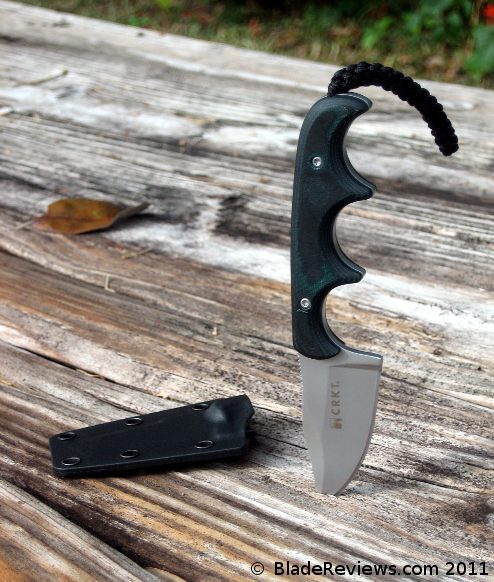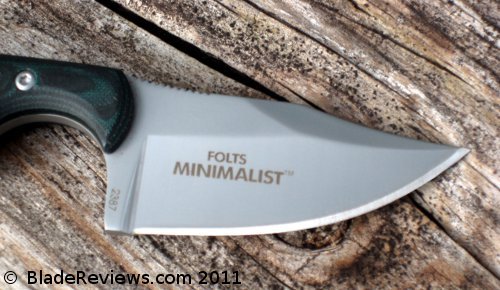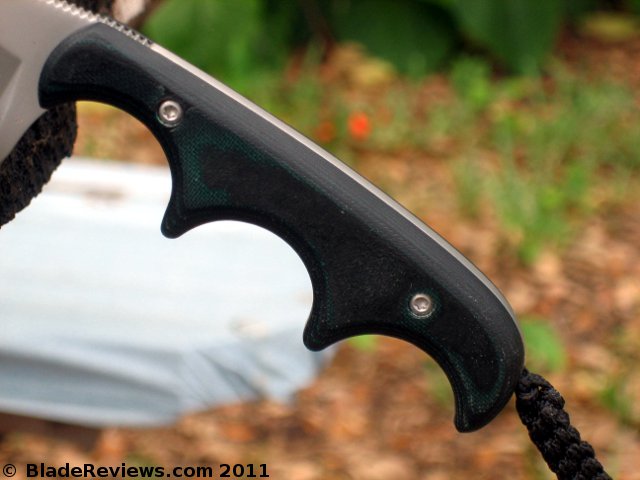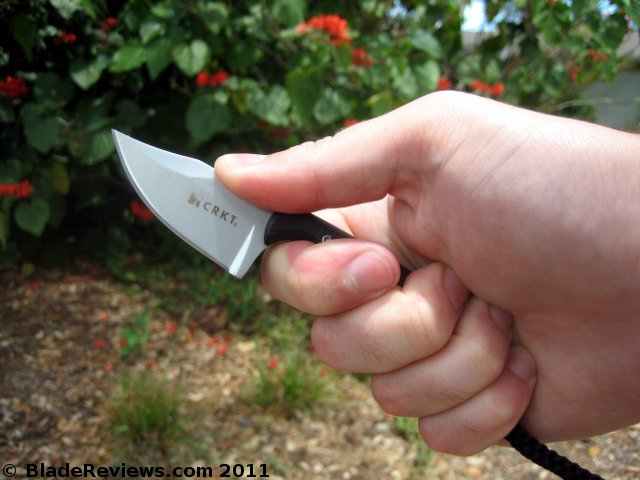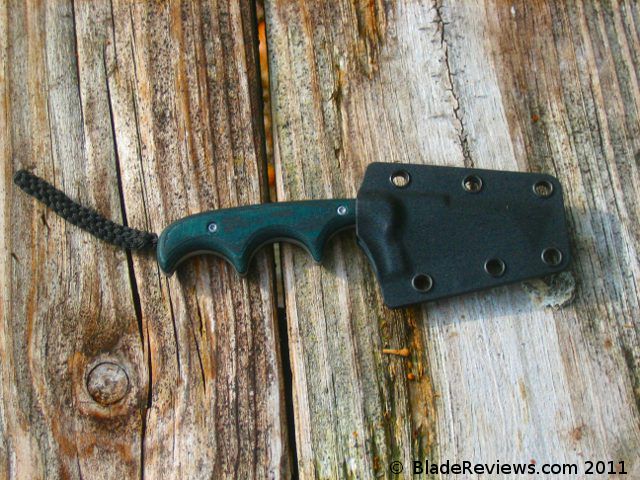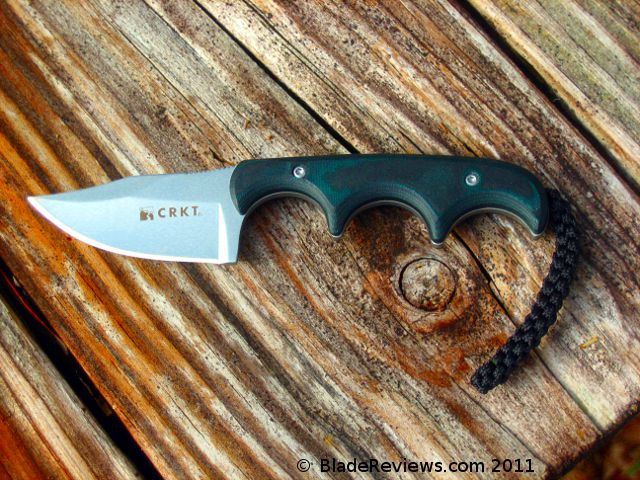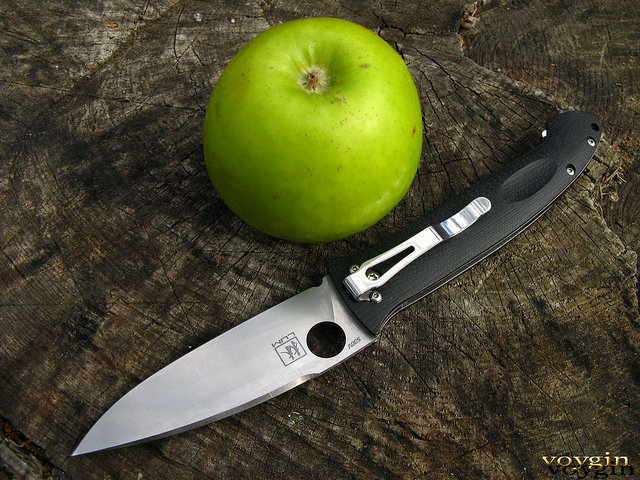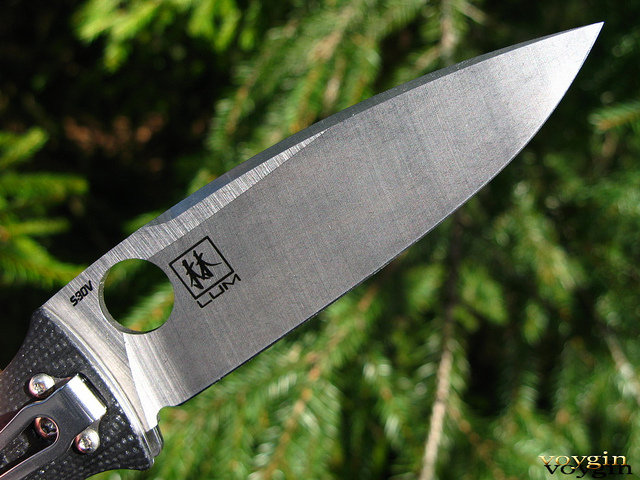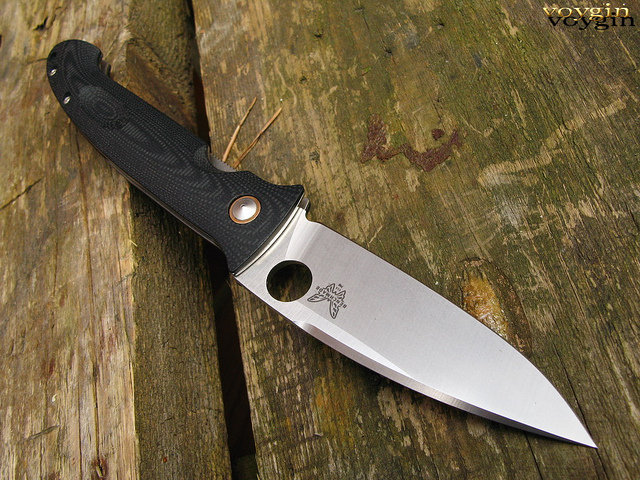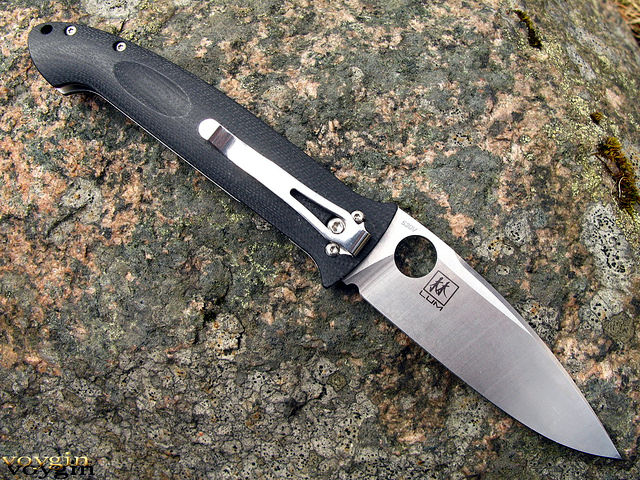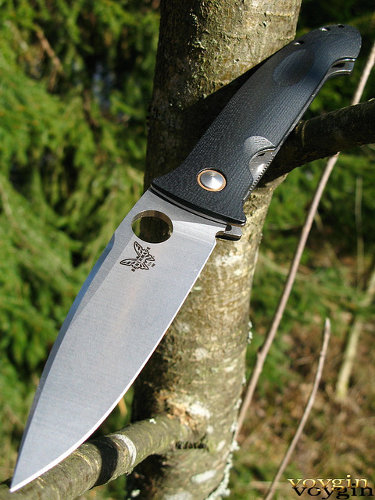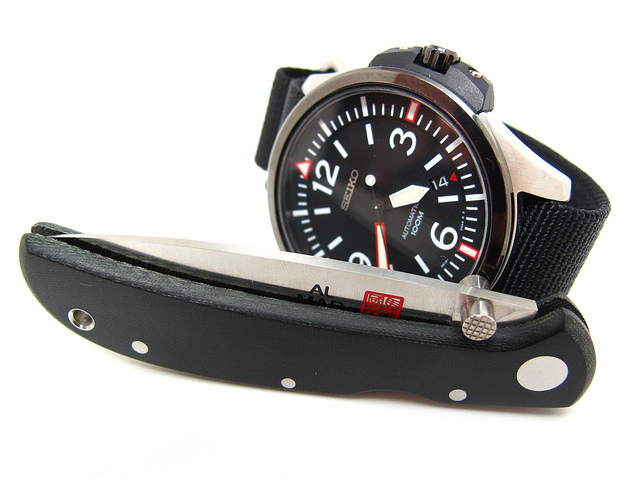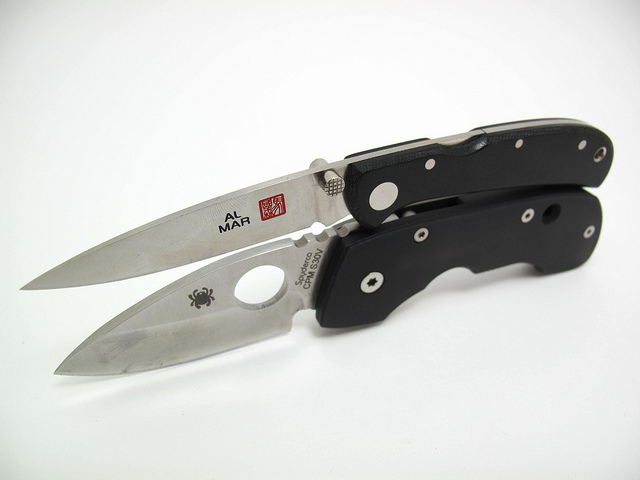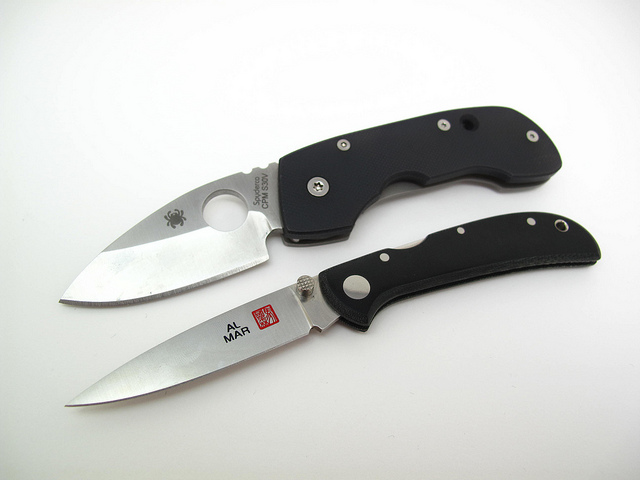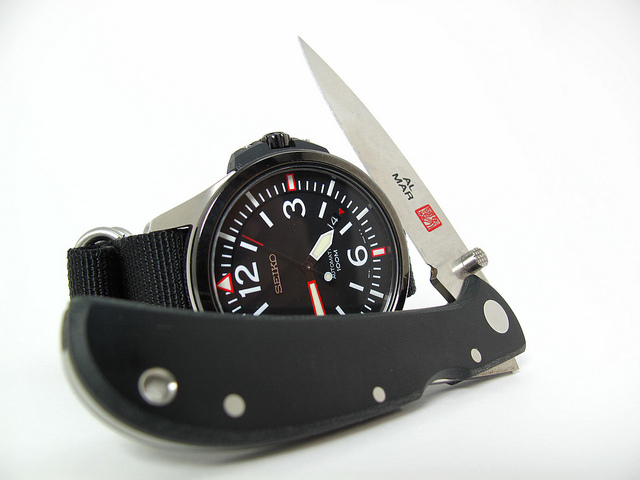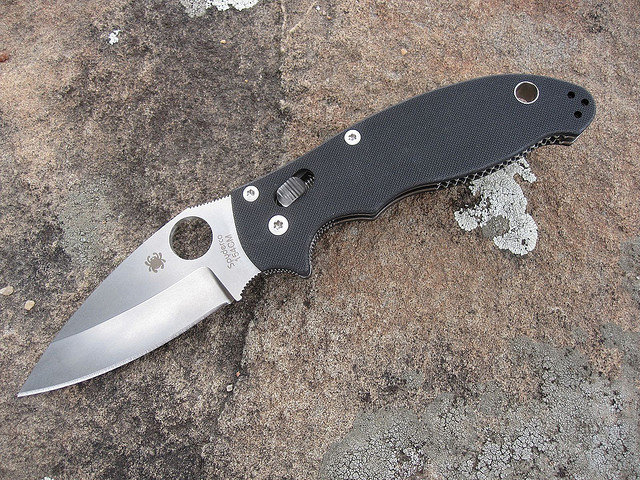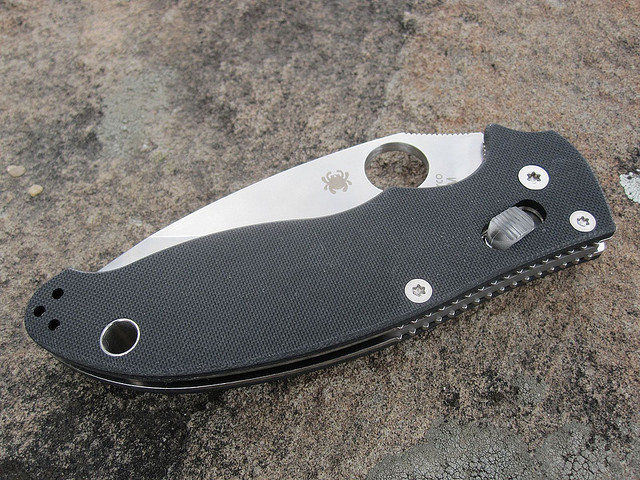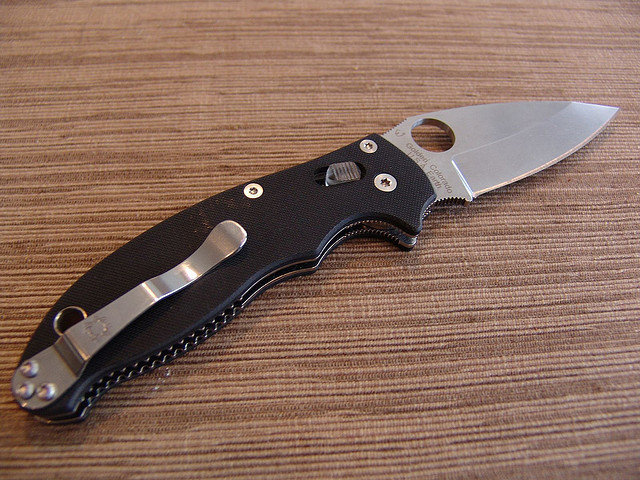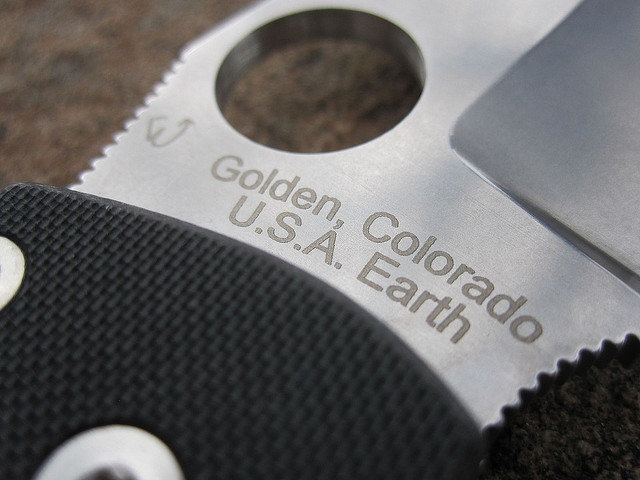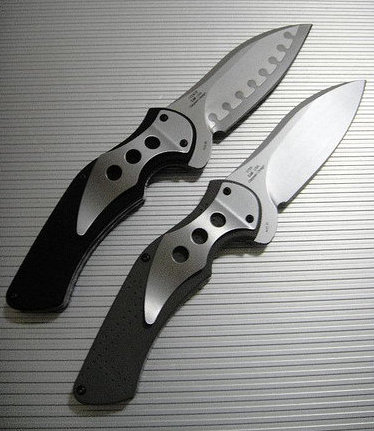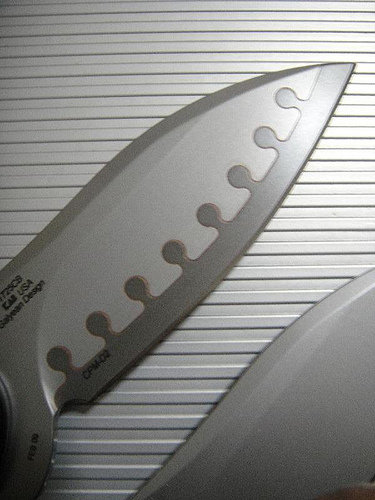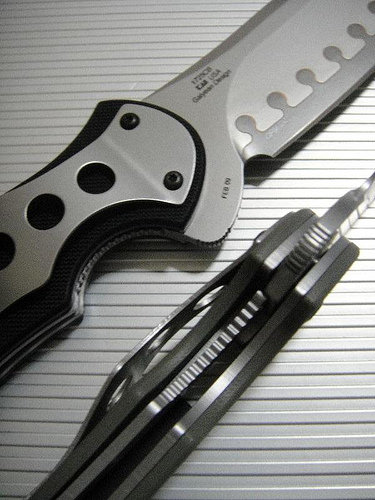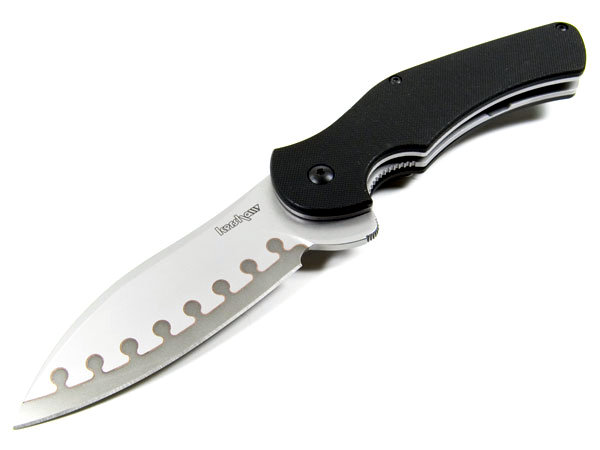Last Updated: August 4, 2019
The CKRT Ripple is a design that had me doing a double take. The flowing lines and sharp looks were very “Ken Onion-y” and upon closer inspection the knife was in fact designed by Ken Onion. It turns out Mr. Onion has parted ways with the folks at Kershaw and he has been picked up by competitor CRKT.
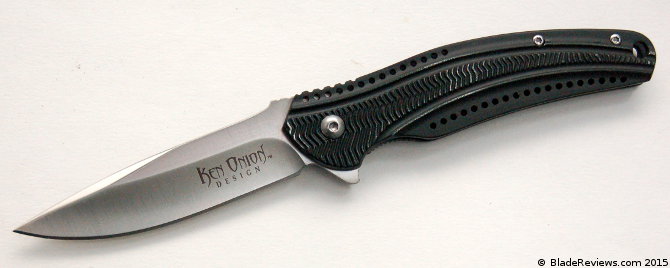
Buy the CRKT Ripple at BladeHQ
The Ripple was one of Ken’s first designs for CRKT. It’s something of a gentleman’s EDC knife, with Ken’s signature flowing curves in a low profile package.
General Dimensions and Blade Details
The Ripple comes in a few sizes. What you see here is the large version with a 3 1/8″ blade, an overall length of 7 1/2″ and a weight of 2.9 ounces. This is a nice size for an EDC knife. Not only is the Ripple lightweight at under 3 ounces, but it’s thin too. The whole knife is less than 5/16″ thick. Plenty of blade in a lightweight package. It’s a slim design that begs to be carried.
The blade is an attractive drop point design. There is an absence of the typical organic curves that Ken Onion is known for, but it still has his style and I find myself wanting for nothing. This is a really slender and refined blade and it comes with an exquisite tip. The swedge running 3/4 of the top of the blade is another elegant touch and the high hollow grind makes this a nice slicer as well. Personally, I love this blade shape.
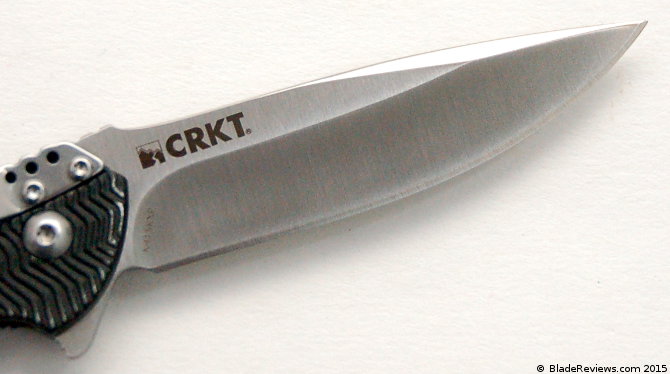
CRKT has released this knife in several different steels over the years, but 8Cr14MoV is going to be the most common configuration. 8Cr14MoV has been discussed at length before, but this is a Chinese steel that is best known for being expensive, easy to sharpen, and holding an adequate edge. It’s on par with AUS-8, but below VG-10 and 154CM in the steel hierarchy. Feel free to check out my knife steel article for more information on different types of steel.
Handle, Ergonomics, and Pocket Clip
The handle of the Ripple is either made of 420J2 stainless steel (the framelock version) or aluminum (the linerlock version – shown here). The handle pieces have first been CNC milled with a ripple pattern. The handle has then been either a blue or black titanium nitride coating and then has been rubbed to reveal the silver look of the steel. It is a very unique look and can be difficult to capture in photographs although darkchild69, our featured photographer, has done an excellent job here. Another design element is the series of 44 small holes milled into the side of the handle. This is more for decoration I think, although it does lighten the handle up slightly. Finally, the handle is bolted together with two pillars. Very simple and as always, very easy to keep clean. This is a very slim handle and all the detail is unlike anything else currently on the market.
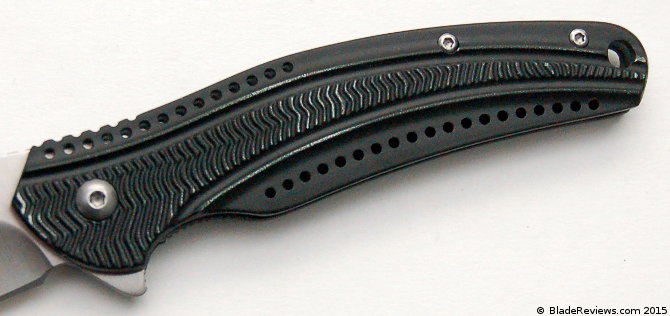
This is a thin metal handle so logic would suggest that this won’t be the most comfortable knife. In fact, the ergonomics are surprisingly good. The handle has been rounded and the flipper helps define the choil. Additionally, there is nice jimping on both the thumb ramp and handle. This provides plenty of traction and makes this a very easy knife to use for general tasks.
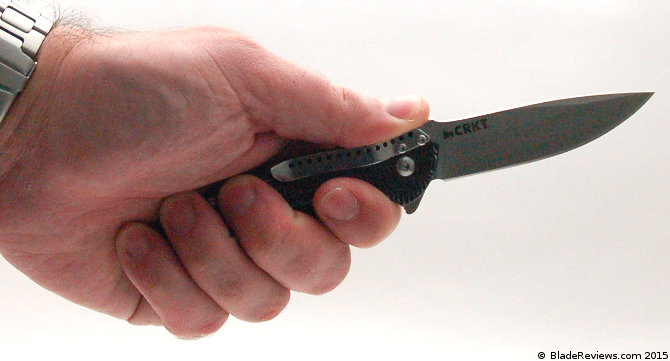
The clip is another interesting component. It is mounted high for tip down carry. It sits flush with the top of the handle and follows the line of the handle. One gripe is that the pocket clip it is tip-down right hand carry only. With the assisted open and the flipper, I can totally see why CRKT opted for tip down carry, but with 44 holes already in this knife, they really need to drill a couple more and make this clip ambidextrous.
Deployment and Lockup
The Ripple is a non-assisted open knife actuated by a flipper on the back of the handle. Those familiar with Ken Onion’s Leek, Chive, ZT 302, etc will be very familiar with this style of deployment. The flipper has been given some aggressive jimping that really bites into your thumb, you will not be slipping on this flipper. There are no thumb studs.
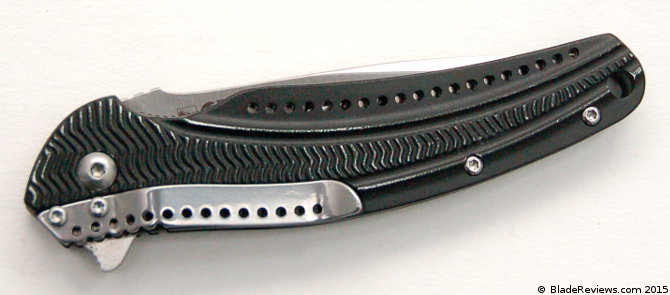
An interesting feature of the Ripple is the IKBS opening system. IKBS stands for “Ikoma Korth Bearing System” and means just that. There are a total of 16 ball bearings (8 per side of the blade). The bearings are uncaged and sit in little grooves machined into the handle and are used in place of teflon or phosphor bronze washers. Initial impressions are very good – the bearings make for a very fast and smooth deployment. This is one of the smoothest opening knives currently on the market (production blades at least). The IKBS combined with the assisted feature makes for effortless blade presentation. And apparently the bearings do not need much maintenance, which is good because I would not want to take this knife apart.
Here is an update from 2019: Over the past 8+ years I’ve owned countless bearing equipped knives. Generally they have held up real well. The versions with caged bearings are easier to take apart. This IKBS equipped knife includes loose bearings. You can take these knives apart too, but you need to be careful. Here is a great video from CRKT on how to clean an IKBS equipped knife.
The Ripple uses a steel frame lock, which is plenty strong for the kind of EDC tasks this knife was designed. Due to the intricate design on the handle you can hardly tell the framelock is there. I like how this looks and I also like how the framelock and adds to the simplicity of the design. However, I have noticed on multiple knives, the framelock extends very far over (see below) while others lock up early. Frame locks are designed to slowly break in and will travel over with extended use. Having the lock engage “late” from the start means that you may get less life out of the lock. If you get a Ripple with this late lock up, I would recommend talking with CRKT and getting it fixed because in my opinion, this shouldn’t happen with a new knife.
Here is a parting size comparison with my Boker Plus Urban Trapper:
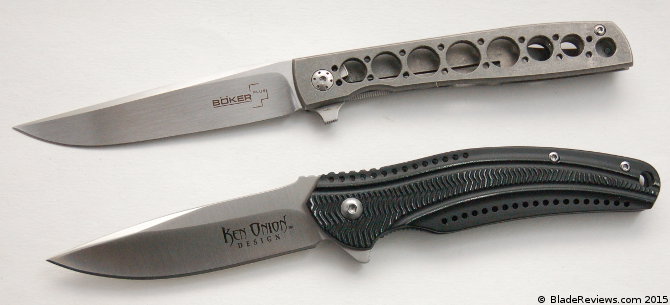
CRKT Ripple Review – Final Thoughts
The Ripple is a beautiful knife. Ken Onion took a sexy blade shape and melded it with a wonderful handle. This knife “flows” from an aesthetic standpoint and I think the design is just phenomenal. The IKBS is both interesting and functional, long term testing will tell if this is a mere novelty or truly a revolutionary way to deploy a blade. The Ripple is made in Taiwan, which we now know (thanks to Spyderco) is capable of making some great higher end blades at a terrific value.
All things considered the CRKT did a great job with the Ripple. I would prefer if they re-worked the pocket clip so that it was ambidextrous, and a little less weird, but beyond that you get a lot of nice knife for the money. The Ripple is one of the knives that laid the foundation for Ken Onion / CRKT collaborations, and continues to be a great lightweight high value option for folks years after its original release.
- Fast Opening: IKBS ball bearing pivot deploys the blade fast
- Fast Opening: The flipper deploys the blade fast
- Strong And Lightweight: Aluminum handle combines strength with minimal weight
- Designed by Ken Onion in Kaneohe, Hawaii
- Limited Lifetime Warranty covers any defects in materials or workmanship, see company site for details
I recommend buying the CRKT Ripple at Amazon or BladeHQ. Thanks for reading and Stay Sharp.

